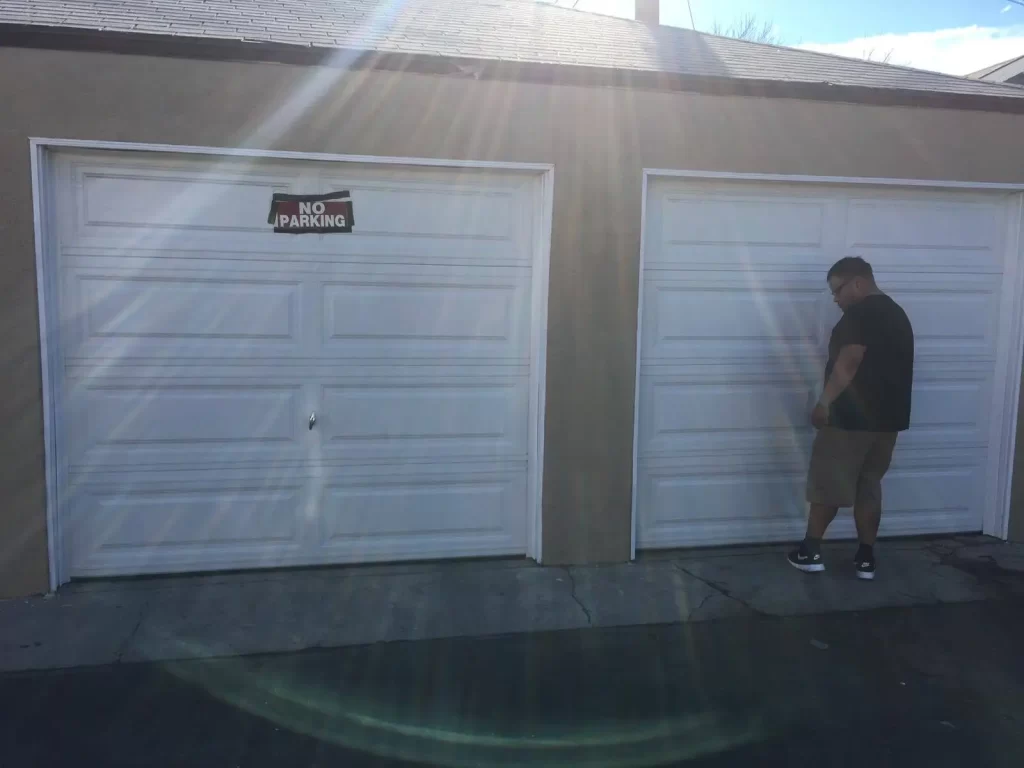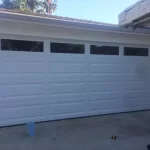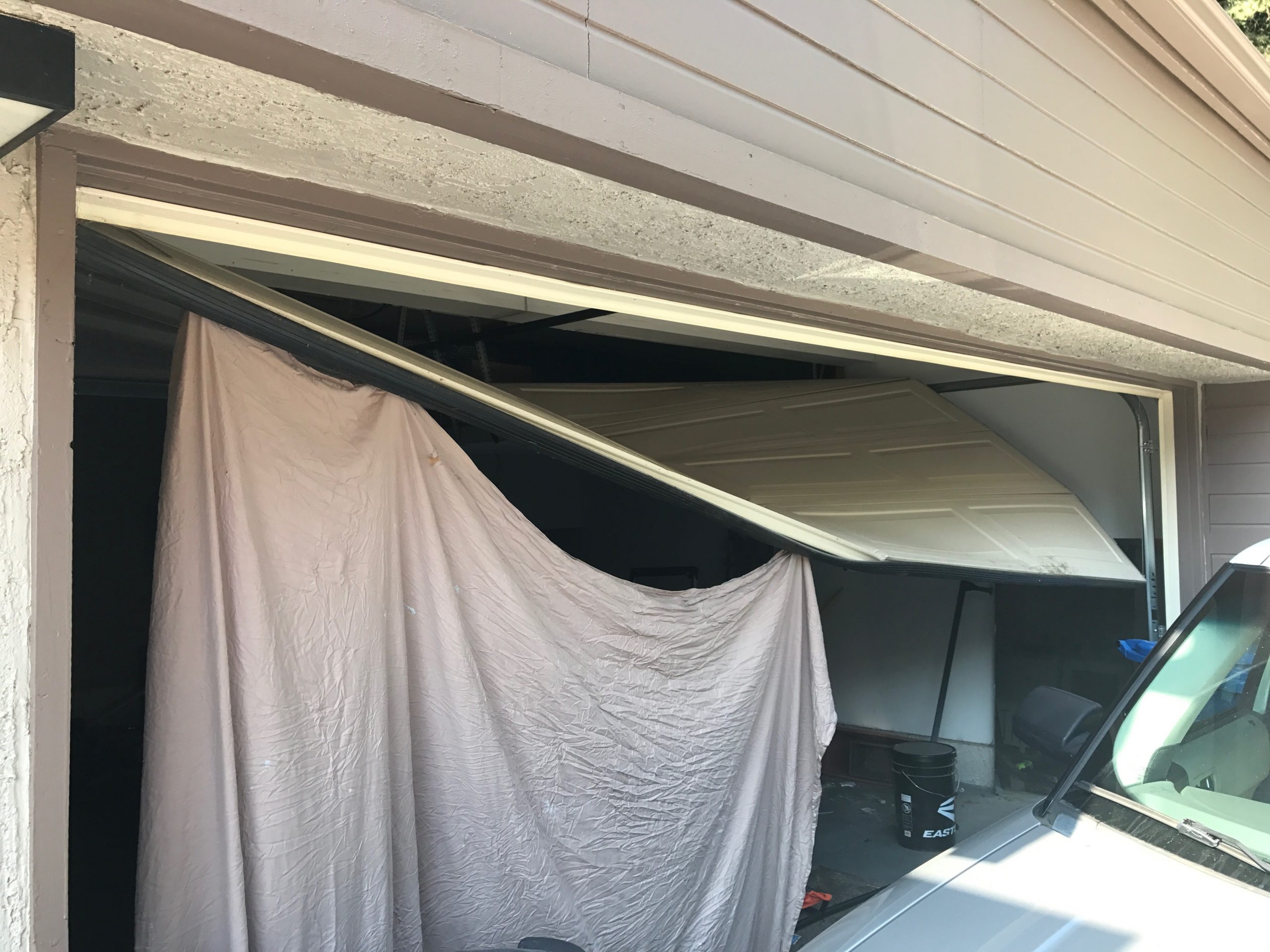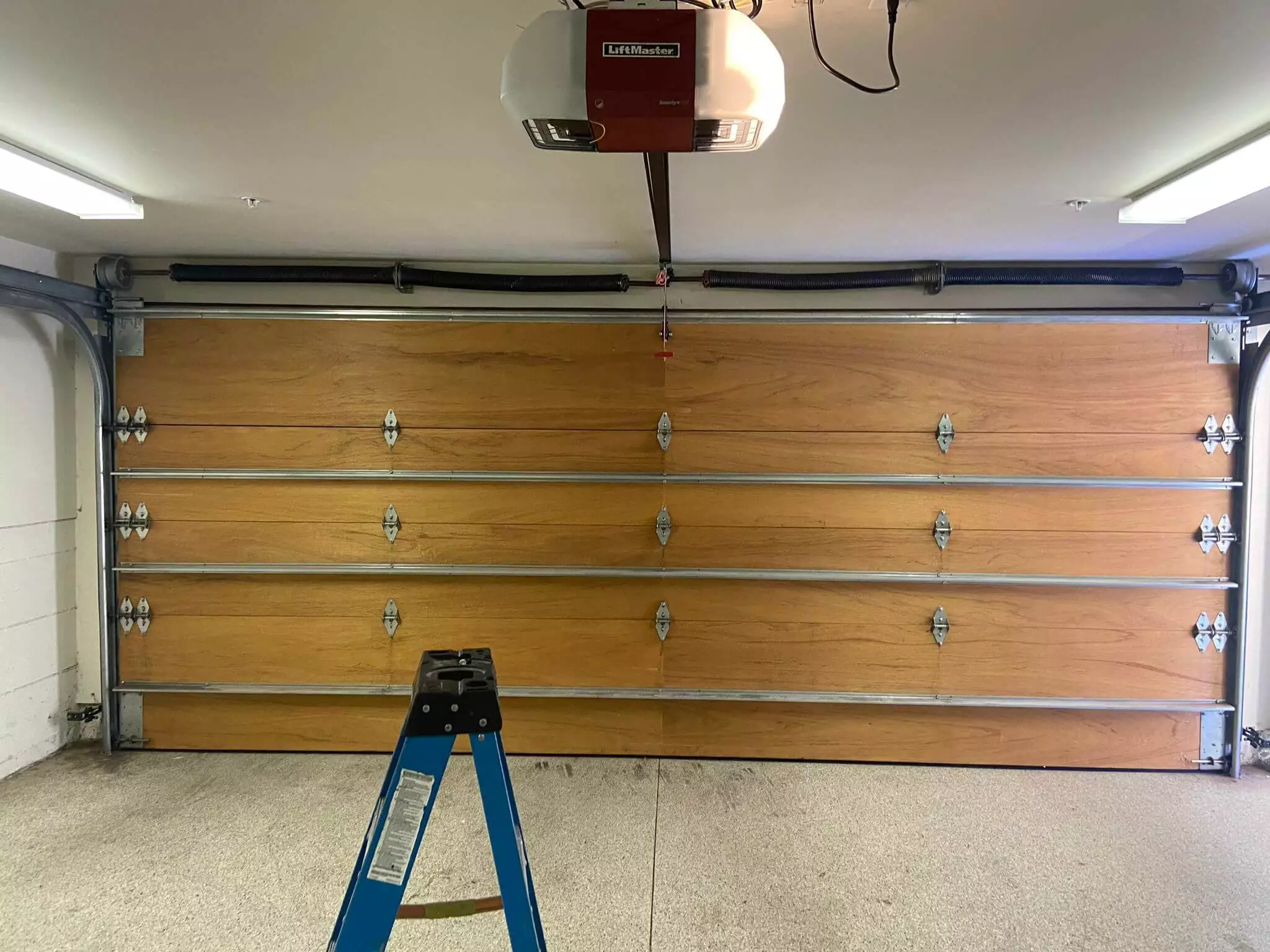Your garage door plays a crucial role in your home’s energy efficiency, especially if your garage is attached. Choosing the right materials and styles can significantly impact your energy bills and overall comfort. Here’s a guide to help you select the most energy-efficient garage door for your home.

Content
1. Why Energy Efficiency Matters
An energy-efficient garage door helps maintain your home’s temperature by reducing heat loss in the winter and keeping the heat out in the summer. This is particularly important for garages attached to your home, as temperature fluctuations can affect adjacent living spaces.
Benefits of energy-efficient garage doors include:
- Lower Energy Bills: By improving insulation, you reduce the energy needed to heat or cool your home.
- Increased Comfort: A well-insulated garage door keeps the temperature in your garage more stable, making it more comfortable to use year-round.
- Environmental Impact: Reducing energy consumption lowers your carbon footprint, making your home more environmentally friendly.
2. Best Materials for Energy Efficiency
When choosing an energy-efficient garage door, material is one of the most critical factors. Here are some of the best materials to consider:
- Steel: Steel doors are durable and can be insulated with foam to improve energy efficiency. They are also relatively low-maintenance and can be customized with various finishes.
- Fiberglass: Fiberglass doors are lightweight and offer good insulation properties. They are resistant to denting and warping, making them a durable choice.
- Wood Composite: Wood composite doors offer the look of wood with better insulation and less maintenance. They are often made with recycled materials, making them an eco-friendly option.
- Vinyl: Vinyl doors are durable and well-insulated, offering excellent energy efficiency. They are also resistant to dents and rust, making them a low-maintenance choice.
3. Insulation and R-Value
Insulation is key to an energy-efficient garage door. The effectiveness of insulation is measured by its R-value, with higher values indicating better insulation. Look for doors with a high R-value, especially if your garage is attached to your home.
- Polystyrene Insulation: This type of insulation is lightweight and offers moderate R-values, making it a cost-effective option.
- Polyurethane Insulation: Polyurethane foam is denser and provides higher R-values, making it the best choice for maximum energy efficiency.
4. Energy-Efficient Door Styles
The style of your garage door can also impact its energy efficiency. Some styles offer better insulation and air sealing than others:
- Sectional Garage Doors: These are the most common type of garage doors and can be highly energy-efficient when properly insulated. Sectional doors have horizontal panels that bend as the door opens, allowing for a tight seal against the elements.
- Roll-Up Garage Doors: Made from narrow slats that roll up into a coil, roll-up doors are typically used in commercial settings but can also be energy-efficient for residential use. They are well-suited for spaces with limited headroom and can be insulated to improve energy efficiency.
- Carriage-House Style Doors: These doors mimic the look of old-fashioned carriage house doors but offer modern insulation and energy efficiency. They typically open outward or swing up like a sectional door, providing a unique aesthetic with practical benefits.
5. Weather Stripping and Sealing
Even the most insulated garage door can lose its energy efficiency if it’s not properly sealed. Weather stripping and seals around the door are crucial in preventing drafts and keeping the elements out:
- Bottom Seal: This is the rubber or vinyl strip along the bottom of the garage door that keeps out water, dirt, and cold air. Inspect and replace it regularly to maintain a good seal.
- Weather Stripping: Weather stripping is applied along the sides and top of the door to prevent air leaks. Make sure it’s in good condition and replace it if it’s worn or damaged.
- Threshold Seal: Installed on the garage floor where the door closes, a threshold seal provides an additional barrier against moisture and drafts.
6. Choosing the Right Color and Finish
Believe it or not, the color and finish of your garage door can also influence its energy efficiency. Lighter colors reflect sunlight, which can help keep your garage cooler in the summer. Additionally, some finishes are designed to reflect more heat, contributing to a more energy-efficient garage.
- Reflective Finishes: Look for garage doors with finishes designed to reflect heat, especially if you live in a hot climate. These finishes can reduce the amount of heat absorbed by the door, helping to keep your garage cooler.
- Paint or Coating: Consider applying a reflective paint or coating to your garage door to enhance its energy efficiency. This can be a cost-effective way to improve your door’s performance without replacing it.
7. Making the Switch to an Energy-Efficient Garage Door
If your current garage door is old, uninsulated, or poorly sealed, upgrading to an energy-efficient model can make a significant difference in your home’s energy consumption. When making the switch, consider the following:
- Evaluate Your Current Door: Before replacing your garage door, evaluate its insulation, seals, and overall condition. If it’s in good shape, you might be able to improve its energy efficiency with some upgrades.
- Consult a Professional: Choosing the right garage door can be overwhelming with so many options available. Consulting with a professional can help you make an informed decision that suits your home’s needs and your budget.
- Consider Long-Term Savings: While energy-efficient garage doors might have a higher upfront cost, they can save you money in the long run through lower energy bills and increased home comfort.
Conclusion
Investing in an energy-efficient garage door is a smart move that can reduce your energy bills, improve your home’s comfort, and contribute to a more sustainable environment. Whether you choose steel, fiberglass, wood composite, or vinyl, ensure the door is well-insulated and properly sealed to maximize energy efficiency.
If you’re considering an upgrade, exploring options for Garage Door Replacement in Williamsburg could be your first step towards a more energy-efficient home. Remember, the right garage door not only enhances your home’s curb appeal but also plays a vital role in maintaining a comfortable and energy-efficient living space.

Melissa Day is a dedicated home blogger who has been blogging for over six years. She covers everything home related. Melissa also loves writing posts about her travels to Europe with her husband and two children.












